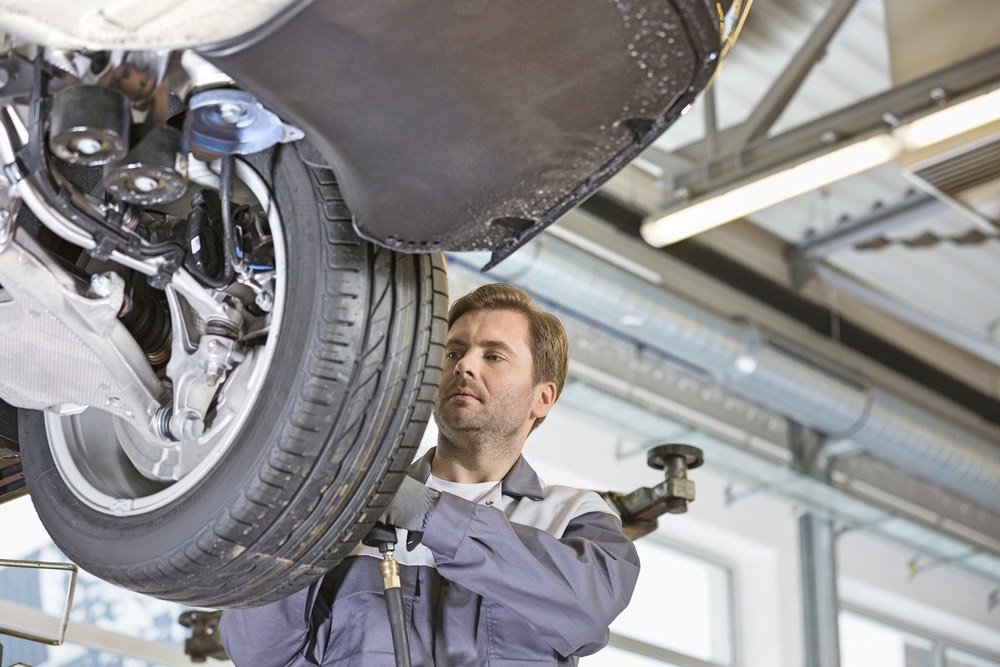“Why Can’t We Improve Hours Per RO?”
By Ted Ings, Executive Director
Hours Per RO is an important metric that indicates whether a service team is sitting back selling oil changes, or eagerly hunting down additional work.
Mathematically speaking, it’s the number of hours sold divided by the number of repair orders.
The pay your technicians take home – as well as the overall profitability of your store – is affected by the hours per RO. It’s definitely a statistic you want to improve. And we've got the tips to help you do just that.
Improve your hours per RO, increase profit
An increase in hours per RO is the responsibility of service advisors, technicians, and of course, the service manager. The entire department needs to work together to improve billable work. Here’s how to make it happen.
1. Perform a service walk-around WITH your customer
This is quite possibly the most effective way to increase hours per RO. Service advisors can almost always find an extra point 3 (0.3) or point 5 (0.5) hours per RO with a top-notch walk-around. It’s a matter of finding just one or two small items that need attention. Include your customer in the interactive write-up at their vehicle. It’s your best selling tool!
WHO NEEDS TRAINING AT YOUR DEALERSHIP?
Of course, the customer must participate so they can see firsthand any issues that need to be addressed. The vehicle owner may have some concerns they wish to point out to the advisor as well.
2. Adjust the sales approach
No one likes a pushy salesperson; it doesn’t matter if you’re selling life insurance or auto repair. If your advisors are trying to foist service on customers, rather than advise, it’s time for a change. Many consumers need to be counseled on repairs and service since they don’t know much about cars. For example, they may want to know why they need a 60k service. What might happen if it’s not done? These are the type of questions advisors should address with every upsell.
3. Perform a more thorough courtesy check
Certainly, an advisor can’t see everything during a walk-around. It’s up to the technician to inspect the nuts and bolts of each vehicle during a courtesy check. Stress the importance of checking everything on the list. Techs often get in the habit of skipping hard to access items.
As a result, upsell repairs are overlooked, and worse yet, the customer misses out on a part of the service they were promised. The effect is twofold: your department loses additional work, and CSI scores drop, leading to an even greater reduction in business.
4. Check scheduled maintenance and vehicle history
Many owner’s manuals go unopened for the life of a vehicle. Customers rarely keep track of their scheduled maintenance, so it’s up to you to do it for them. During the walk around, advisors should note the mileage on the car. Then, look at the manufacturer's maintenance schedule, as well as the vehicle history, to see if any service is due to be performed. Also, take a look in history to see if there’s work the customer passed on last time that could be done during the current visit.
5. Improve communication
Clear communication between techs and advisors is critical. The front counter needs to know what’s required to fix a vehicle. Likewise, technicians need a good recount of the customer’s complaint to get their job done. A healthy two-way dialogue increases productivity and customer satisfaction.
6. Don’t forget value-added services
Non-essentials like accessories and vehicle detailing are small things that can boost hours per RO. Try selling them when appropriate.
7. Monitor technician efficiency
If you’ve got a technician who continuously fails to produce, it’s time to find out why. Speak with the individual. Is more training needed? Do they have a disconnect with the service advisors? Do your best to analyze the problem and get them on track.
8. Change your attitude
Book a Complimentary "Ask the Expert" Discovery Call with Ted Ings
Exclusively for Dealers, Executive Managers and OEM/Lender/Suppliers
Your team needs to be competitive to increase the hours per RO. Without a strong work ethic, and a desire to be the best, it’s nearly impossible to expand billable work.
WHO IS TED INGS?
Get your team motivated with strategies like incentives and team rallies.
Strive to be the best
The benchmark for hours per RO is typically somewhere between 3.0 and 4.0, yet many dealerships are stuck between 1.0 and 2.0 hours. Don’t allow your department to be one of those at the bottom. Get to work immediately to increase your billable hours and overall productivity.
Sources: https://www.motor.com/magazine-summary/business-sense-building-profitable-repair-order-march-2001/
The documents posted on this Website contain external links or pointers to information created and maintained by other public and private organizations. These links and pointers are provided for the user’s convenience. Center for Performance Improvement does not control or guarantee the accuracy, relevance, timeliness or completeness of this outside information. The inclusion of links or pointers to particular items is not intended to reflect their importance, nor is it intended as an endorsement by or for the Center for Performance Improvement.





